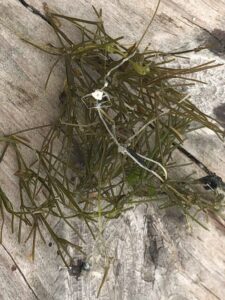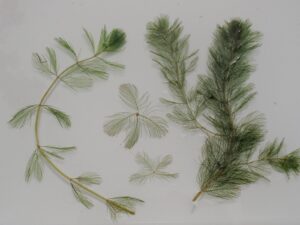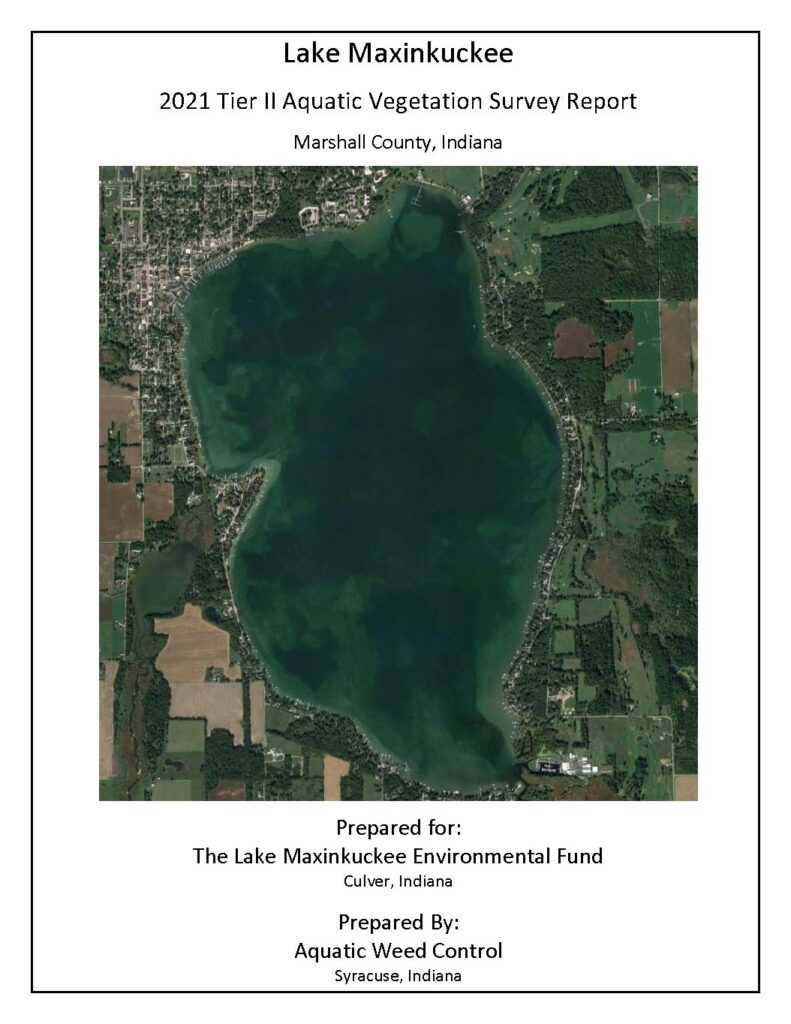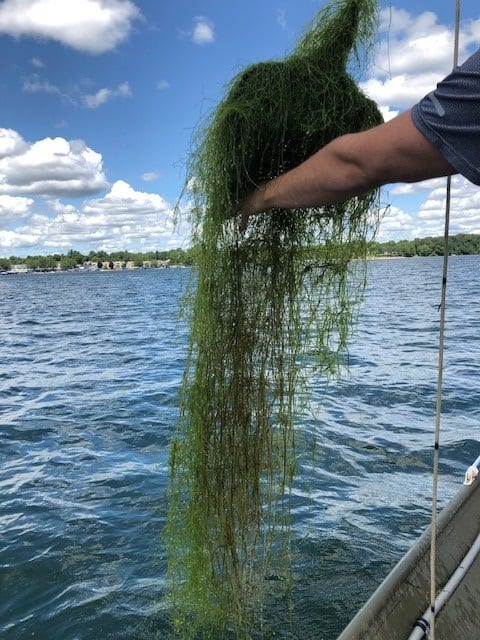Photo: Full rake of Starry Stonewort pulled from Lake Maxinkuckee
Last year I wrote an article about the role that aquatic plants play in a healthy lake.
Benefits of Aquatic Plants

Nitellopsis obtusa
- Provide Habitat and Food for Fish and Wildlife
- Improve Water Clarity and Quality
- Protect Shorelines and Lake Bottoms
- Visually Attractive

Myriophyllum spicatum
What we don’t want to see are invasive, non-native aquatic plants like Eurasian watermilfoil (EWF) and Starry Stonewort (SSW). Unfortunately, we have both in Lake Maxinkuckee. We have known about the EWF for several years, but the discovery of SSW in 2020 set off alarm bells. I have been following other lake’s attempts at eradicating this invasive plant and was deeply concerned about the fate of Lake Maxinkuckee.
Starry Stonewort | WACF | Wawasee Area Conservancy Foundation
Starry Stonewort – An Invasive Species We Need To Watch | Be Aware
After consulting with both a private company and the DNR, we had two options in our approach to Starry Stonewort. One was a conservative, “Wait and See” approach and the other was an aggressive, “Kill it Now Before It Spreads” approach.
Our first step was to determine how widespread the Starry was. LMEF contracted with Aquatic Weed Control to conduct an Aquatic Vegetation Survey, which was completed in August 2021. Starry Stonewort was found abundantly in deep areas of the lake, not in the shallow areas as expected. It was determined that it was not a new infestation and actually, was not causing any problems. This situation is unique in that typically, once Starry Stonewort is in a water body, it quickly takes over the shallow areas and causes significant recreational issues. Aquatic Weed Control recommended that we begin setting funds aside to deal with Starry Stonewort in the future, but that we have a more immediate problem with Eurasian Milfoil.
What started out as an approach to managing Starry Stonewort has turned into an Eurasian Watermilfoil issue.
In comparing a survey from 2011 to the 2021 survey, the amount of acres with heavy infestation of Eurasian Milfoil has gone from 14.5 acres to 31.6 acres.

Lake Maxinkuckee has been very fortunate in that historically, controlling aquatic vegetation has not been in issue. Some people would like fewer plants in the lake but, as stated above, there are benefits to aquatic plants.
Your LMEF Board is working with industry professionals to find a balanced solution that allows people, animals and plants to coexist in and around the water. No matter what course of action is decided on, we will keep the community informed.
If you would like a copy of the 2021 Aquatic Vegetation Survey, or would like to help with aquatic plant monitoring, please send an email to lmec@lakemax.org.

Hi, I’m Debbie Palmer. I received a BS in Horticulture from Purdue University. Here at LMEF, I am responsible for outreach presentations, monitoring the lake and it’s wetlands, project manager for restoration and research projects, and act as a community resource for all things related to the well-being of Lake Maxinkuckee and its surrounding watershed. I completed Indiana Watershed Leadership Academy, volunteer with the Indiana Clean Lakes Program, Hoosier River Watch and Marshall County Lakes and Waters and serve as a Board Member for Indiana Lakes Management Society.


Recent Comments